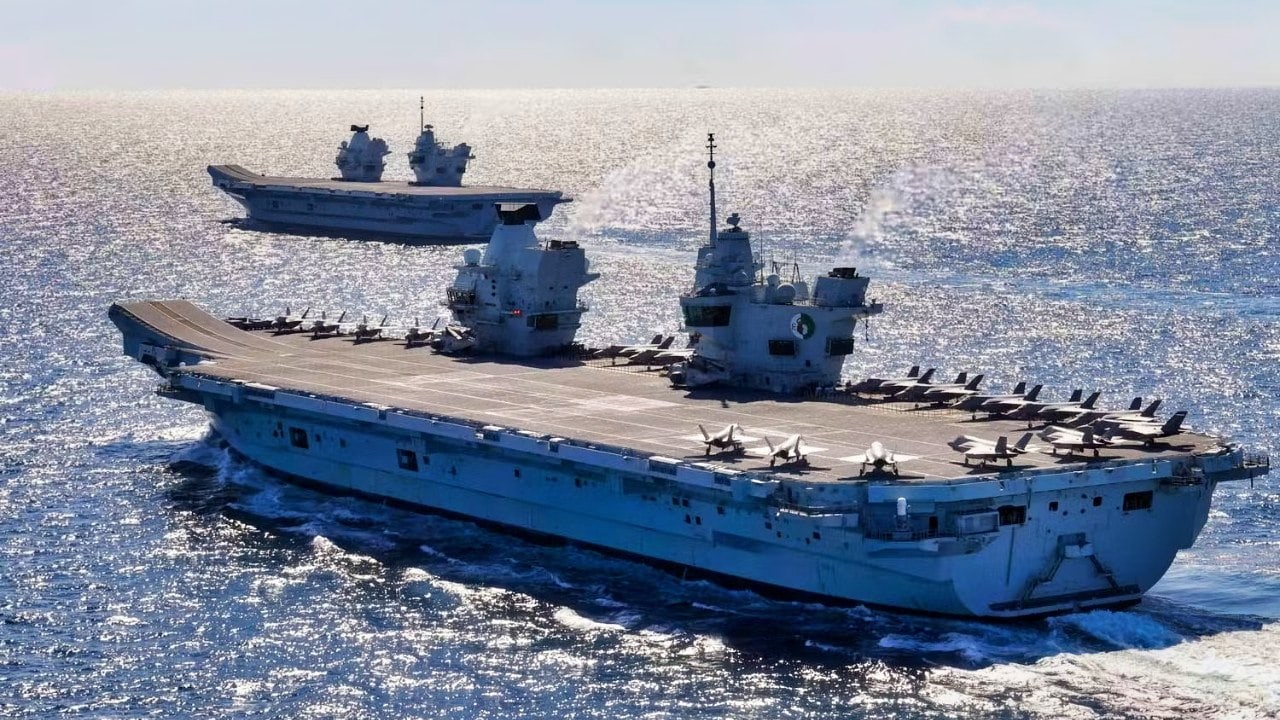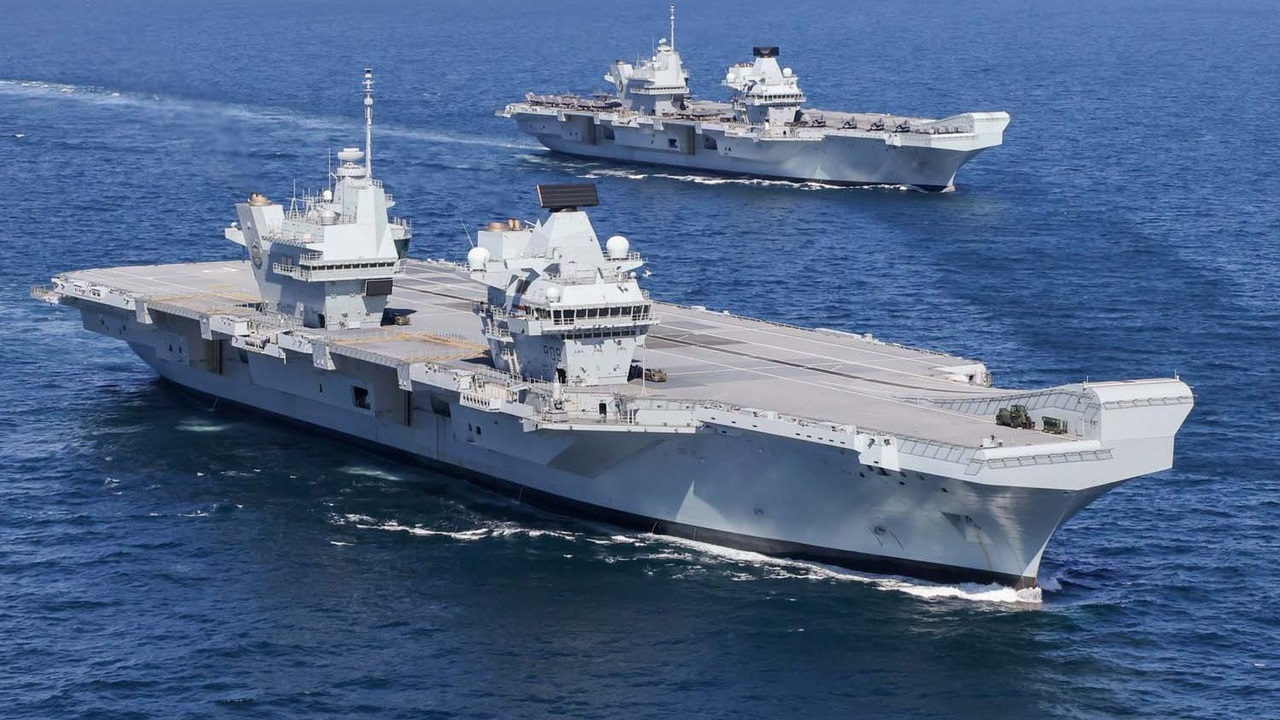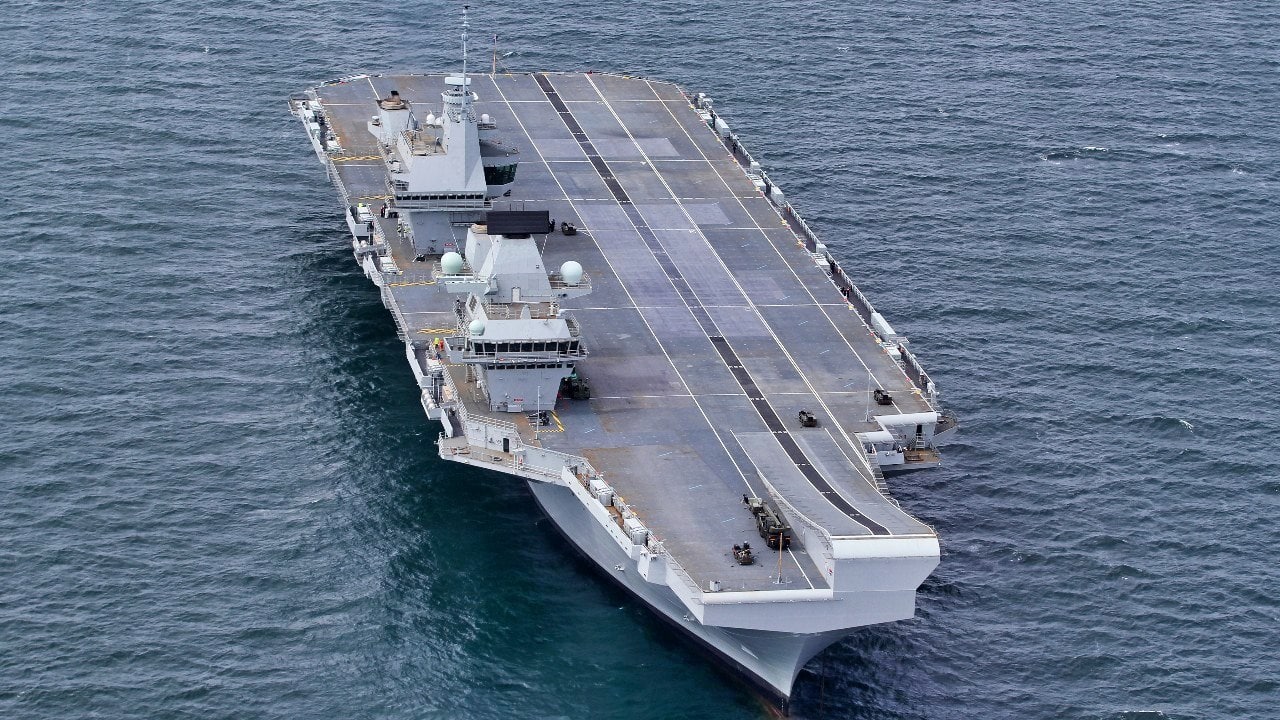Key Points and Summary: The Royal Navy, once the world’s most dominant fleet, has steadily declined in size and capability.
-From its peak of 1,400 ships during World War II to just 62 today, Britain’s navy faces significant challenges.
-While its two aircraft carriers symbolize its enduring naval ambitions, they lack sufficient escort ships and strike group assets to be truly effective.
The Royal Navy Is Shrinking: Can Britain Still Rule the Seas?
The Royal Navy has a long and colorful history, and it has saved Britain against its enemies more than once. Sadly, however, Britain’s navy continues to shrink. At the end of 2024, the force was down to roughly 32,000 personnel and 62 commissioned ships.
The Royal Navy is a fraction of the size it boasted in previous eras. It ended World War I as the world’s most powerful navy, being larger than the U.S. and French fleets combined, and more than twice the size of the Imperial Japanese Navy and Royal Italian Navy combined.
Despite reductions during the interwar period, on the eve of World War II the Royal Navy was still the largest in the world. In 1939, the First Lord of the Admiralty commanded a fleet of more than 1,400 ships.
This was greatly reduced in the post-war years due to the enormous economic burden that the war had caused Great Britain.
The decline of Britain’s empire also dramatically reduced the revenue streams coming into the treasury’s coffers. As the U.S. took over the role of policing the seas that the Royal Navy once held, the latter’s force declined in size accordingly.
Most navies began retiring large and expensive battleships, as guided missiles launched from smaller ships became more readily available, but the Royal Navy still had 900 ships after the war.
In The Modern Era
By the time of the Falkland Islands War, it was clear the Royal Navy’s focus on becoming an anti-submarine force had left it without the capacity to engage in expeditionary warfare.
The number of major ships in the force declined again, by 74%, after the Falkland Islands campaign.
You could point to the Royal Navy’s two somewhat troubled carriers as proof that it is still alive and well as a naval force. Although small, Britain’s navy can still carry out a broad spectrum of missions.
However, as a retired U.S. Navy captain pointed out in Foreign Policy more than two years ago:
“If Great Britain’s going to reemerge as a sea power, they’re going to need more than just the carriers…You don’t build carriers for presence. Carriers are the ultimate power projection source. So, if you don’t have the rest of that force…the carrier becomes a wasting asset.”
Needed: More Defense Outlays for the Royal Navy
As the same article details, “the problem is that Britain doesn’t have enough assets to create what Washington would recognize as a proper carrier strike group. In Pentagon terms, every carrier needs three smaller ships as a defensive perimeter in treacherous waters, and 65 to 70 carrier-fired jets.
“Britain’s escort fleet of frigates and destroyers will dip to just 17 ships by next year, while the Queen Elizabeth’s twin carrier, the HMS Prince of Wales, has been sidelined with engineering issues.”

Queen Elizabeth-Class. Image Credit: Royal Navy.
What is clearly needed is a plus-up in UK defense spending to supply the Royal Navy with what it needs to be a credible force. But that is a conversation no recent government has been willing to have with the electorate.
Writing in an October 2022 paper for the Royal United Services Institute, the organization’s deputy director stated clearly “there has been very little attempt to ready the British public for the sacrifices that will be needed for a similar [required] level of increase for defense.”

HMS Prince of Wales and HMS Queen Elizabeth pictured at sea for the first time…Wednesday 19 May 2021 saw a historic moment in Britain’s carrier renaissance as HMS Queen Elizabeth and HMS Prince of Wales met at sea for the first time. With two 65,000 tonne carriers in operational service, Britain has a continuous carrier strike capability, with one vessel always ready to respond to global events at short notice. Image: Creative Commons.
About the Author: Reuben F. Johnson
Reuben F. Johnson is a survivor of the February 2022 Russian invasion of Ukraine and is now an Expert on Foreign Military Affairs with the Fundacja im. Kazimierza Pułaskiego in Warsaw. He has been a consultant to the Pentagon, several NATO governments and the Australian government in the fields of defense technology and weapon systems design. Over the past 30 years he has resided in and reported from Russia, Ukraine, Poland, Brazil, the People’s Republic of China and Australia.

